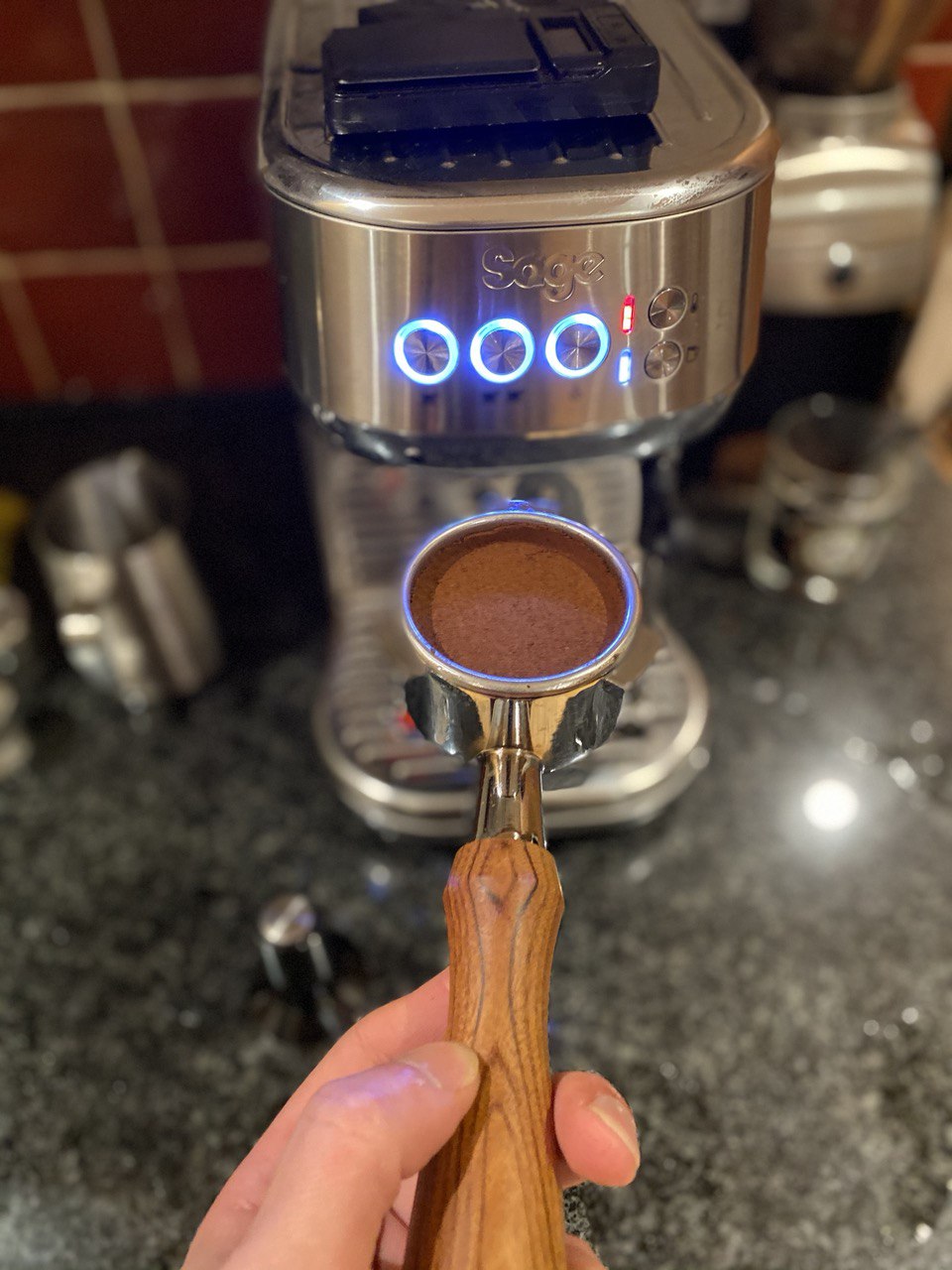Tuesday Triage #14
- TUESDAY TRIAGE #14 by Vadim Drobinin
- On low-hanging fruits
- Things I enjoyed reading
- 1. Your writing style is costly by @dontmitch
- 2. Email to former board member by Ryan Caldbeck
- 3. How to Debitter Olive Oil for Emulsions by @abrowntable
- 4. No, C++ still isn't cutting it. by David Andersen
- 5. Why Are the Noses Broken on Egyptian Statues? by Edward Bleiberg
- 6. Where are All the Successful Rationalists?
- 7. A Brief History of Word Games by Adrienne Raphel
- 8. Hamlet is Shakespeare’s greatest villain by Catherine Butler
- 9. You Reap What You Code by @mononcqc
- 10. Analyzing the Design of Unusual Japanese Butter Tableware by Rain Noe
- Things I didn't know last Tuesday
- 1. Gömböc
- 2. Stuart Little is NOT a mouse
- 3. Nottingham cheese riot
- 4. [əjˈvisə]
- 5. Murmuration
- 6. L-glucose
- 7. White pudding
- 8. Mississippi ended Prohibition only in 1966
- 9. Tbilisi coffee factory
- 10. Agnes Marshall
- Book of the week
- Thank you and see you in a week!
TUESDAY TRIAGE #14
by Vadim Drobinin ¶
Your weekly crème de la crème of the Internet is here!
20.10.2020 (read in browser)
On low-hanging fruits ¶
When I see aspiring folks struggling with grasping the sense of the field, whether it is development, cooking, or cocktail making, they tend to have the same root cause behind it.
The feeling of being forced to memorize thousands of different things at once.
One way to look at it is to divide and conquere by identifying a few core principles, and then to realise that these thousands of different things are just mere combinations of the same building blocks.
Cocktails have five or six very basic templates behind them, cooking is built on staples of Maillard reaction and flavour pairings, programming mixes together occasional algorithms and common sense.
There is a so-called Dreyfus model of skill acquisition and it does what it says by observing one's journey on the learning path, which goes from “dogmatic following of rules and lack of big picture” to “intuitive transcending of rules and complete understanding of big picture” in five steps.
If I were to save you from reading the paper and reviews to it (and to save myself from writing a separate post), the main takeaway is that the initial state of a "novice" is indeed terribly painful and frustrating, and the motivation tends to come and go in mere minutes, but luckily it is a very brief part of one's story.
The most dangerous part is the next one, the "advanced beginner" stage, where the person is capable enough of solo learning and picking low-hanging fruits, but lacks the vision of a greater scheme of things (whatever that means) and might get stuck indefinitely.
What's the advice then? Do not follow the rules dogmatically and try to find the big picture, that's it -- nothing about picking one programming language over the other, or stirring a cocktail with a silver spoon in anticlockwise motions.
Things I enjoyed reading ¶
1. Your writing style is costly by @dontmitch ¶
So much that.
Every person who reads your message spends some finite period of time interpreting what you’re saying. Setting aside the possibility that a sloppy message might lead the reader to an incorrect interpretation, it’s harder to parse messages written hastily — messages with poor grammar, misspellings, minimal punctuation, obscure acronyms, or delivered a few words at a time.
Making unintentional mistakes is fine as far one's learning goes, but forcing others into decyphering acronims and trying to understand the hidden message behind emojis and words with mistakes is just rude.
2. Email to former board member by Ryan Caldbeck ¶
Our culture would be way-way better if a similar letter full of helpful feedback were to be delivered to ex-employees and ex-employers, ex-colleagues, and so on.
[...] I don't know what you'll do with this feedback. There is a good chance you'll toss it and never share it with others. But on the off chance that you want to work these things through, I think your colleagues and the entrepreneurs that you work with stand to benefit from some self-reflection on your part. You know I'm not making these examples up and there are many many more, most with witnesses. This is serious stuff, and it affects people's lives. Not just the people you see, but their families. I think and hope that you are capable of better than I got from you.
For mere developers this is usually the job of their managers, but from my previous experience the managers would significantly benefit from receiving a letter with such a detailed feedback as well.
3. How to Debitter Olive Oil for Emulsions by @abrowntable ¶
If you ever tried to make a mayonnaise at home, and used an extra-virgin olive oil for that, you might have noticed a weird bitter taste in the resulting product.
Apparently there is a way to fix it:
As often is the case, the solution turned out to be much more simple and practical. While researching the chapter on bitterness of The Flavor Equation and hunting for a possible solution to my mayonnaise issue, I came across a research study that was looking at a way to extract and recover oleuropein and other phenolic compounds from olive leaf waste. The scientists determined that adding boiling water to the olive leaves yielded the maximum amount of polyphenols extracted. This is something I could easily do in my kitchen!
4. No, C++ still isn't cutting it. by David Andersen ¶
This post is a reply to another post, where the author argues that C++ is way better than we grew to think.
As you might guess, this is a negative reply.
Despite its shorter length, the Rust version probably took me longer to write than the C++ version would have. I had to spend more time figuring out what functions returned so I could handle their possible return types, and had to spend a bit more time googling for things like the filesystem metadata, probably because I'm newer to the language. But making it correct and making it parallel took less time, even though I'm less experienced in the language. I'll take that tradeoff in a lot of what I do.
I am not that familiar with Rust, but definitely see where it's coming from.
5. Why Are the Noses Broken on Egyptian Statues? by Edward Bleiberg ¶
In a nutshell: not only noses, and not only on Egyptian statues, but mostly to strip someone out of powers.
For example, statues whose role is to embody the act of making offerings are often damaged on the left hand and arm, because Egyptian custom was to offer with the left hand. Statues that, in contrast, receive offerings are damaged on the right arm and hand, since customarily the right hand was used to receive an offering: a damaged right arm and hand make it impossible to take the food from a represented offering table.
6. Where are All the Successful Rationalists? ¶
I learned about Yudkowsky's essays by reading Harry Potter and Methods of Rationality, a great fanficational story built on the rational thinking. Now the question is, does it actually work?
A better excuse is that startup founders are just totally insane, in a way that precludes any rational or even rationalist person from joining their ranks. Elon Musk famously compared entrepreneurship to “chewing glass and staring into the abyss”; Paul Graham warned “If you start a startup, it will take over your life to a degree you cannot imagine”.
7. A Brief History of Word Games by Adrienne Raphel ¶
A great write-up about the history of word games. I could have easily filled in the whole section on things I didn't know before, but it worth highlighting separately:
Oxford mathematician Charles Dodgson, better known by his pseudonym Lewis Carroll, invented a game called doublets, in which you transform one word into another of equal length, changing a single letter at a time, using as few moves as possible; all the linking steps also have to be legitimate words. As in a crossword, the process of moving stepwise from letter to letter forces you to think about all the possible word combinations. And each doublet has a theme, a kind of mini-alchemy: Drive PIG into STY. Raise FOUR to FIVE. Make WHEAT into BREAD.
8. Hamlet is Shakespeare’s greatest villain by Catherine Butler ¶
When you think about Shakespeare's prose (if you ever do, obviously), who comes to mind as the greatest villain? I'd go for Macbeth.
Here the author argues that it is Hamlet:
In short, Hamlet is a self-centred, entitled, manipulative, callous bully. However, he is also intensely charismatic, so much so that he has persuaded the world to share his Hamlet-centric view.
9. You Reap What You Code by @mononcqc ¶
A great way to put in words the consequences of bad (and good) decisions:
A thing we try to do, especially as software engineers, is to try to keep the code and the system—the technical part of the system—as simple as possible. We tend to do that by finding underlying concepts, creating abstractions, and moving things outside of the code. Often that means we rely on some sort of convention.
10. Analyzing the Design of Unusual Japanese Butter Tableware by Rain Noe ¶
Did you ever think about ergonomics of a butter knife? Well the Japanese did despite being quite new to the topic.
Like other East Asian cultures, butter was never a part of the traditional Japanese diet, and was actually treated with disgust when introduced by Europeans in the 19th century.
(there are two many pictures to include in the newsletter but do check them out -- some of the knifes are incredible)
Things I didn't know last Tuesday ¶
1. Gömböc ¶
The gömböc is a convex three-dimensional homogeneous body that when resting on a flat surface has just one stable and one unstable point of equilibrium. Its existence was conjectured by the Russian mathematician Vladimir Arnold in 1995 and proven in 2006 by the Hungarian scientists Gábor Domokos and Péter Várkonyi.

A noticeable chunk of my education was based on Vladimir Arnold's books and yet I never heard of that thing (no regrets though).
2. Stuart Little is NOT a mouse ¶
I grew up on movies about Stuart Little, the mouse in sneakers and a jumper (yeah, I am that young).
For those who did that as well, a word of advice: do NOT open the book.
Because in the book ~it~ he is not a mouse but
a two-inch-tall baby looking “very much like a mouse in every way,” [...] “arrived” to take his place as second son in the Upper West Side-dwelling Little family.
And despite the looks, the books puts the accent on him being a "human boy" quite a few times.
Not sure if I would re-watch the movie after that.
3. Nottingham cheese riot ¶
The Nottingham cheese riot (also known as The Great Cheese Riot) started on 2 October 1766 at the city's Goose Fair. The riot came at a time of food shortages and rising prices in England. Violence broke out when local citizens intervened to prevent Lincolnshire merchants taking away Nottinghamshire cheeses they had bought at the fair.
Upon reading about the event I assumed that the cheese was cheddar.
Oh boy, I was wrong.
It was a predcessor of Red Leicester, so I can't even blame the rioters.
4. [əjˈvisə] ¶
How'd you refer to Ibiza?
The official Catalan name is Eivissa (locally
[əjˈvisə])
To make things more complicated, one could go for the Spanish name (Ibiza, pronounced [iˈβiθa]) but in the UK folks tend to respect others customs and grammar rules, so use the approximation of the Spanish (/aɪˈbiːθə, ɪˈ-/ eye-BEE-thə, ih-), whereas in American English the pronunciation is closer to Latin American Spanish (/iːˈbiːsə/ ee-BEE-sə) and is pretty much the same as in Russian.
However, I stumbled upon a Russian article referring to it as Eivissa today, so after the initial shock decided to share.
5. Murmuration ¶
A beautiful word for
the behavior exhibited when a group of birds, called a flock, are foraging or in flight.

I have seen it a few times and never knew it has a dedicated word. Interestingly, all birds behave autonomously, so the basic implementation of a flocking algorithm has complexity O(n^2) - each bird searches through all other birds to find those which fall into its environment. It can be improved to O(nk) but I will leave this exercise for very bored subscribers.
6. L-glucose ¶
L-glucose is, in simple words, a mirrored sugar molecule. It tastes the same as the normal (D-glucose) sugar but has minimal effect on blood glucose levels, so would be an ideal sweetener.
Levin’s research was promising, but it soon hit a snag: the refinement process was extremely expensive, and he couldn’t think of a way to make it cheaper. He was so close to a huge breakthrough for people with diabetes: a low-calorie, natural sweetener that tasted exactly the same as sugar, with minimal effect on blood glucose levels.
Sadly, it costs 50% more than gold to produce. That's why the humanity sticks to stevia.
7. White pudding ¶
I do love black pudding, and yet many people find consuming blood in any form to be a less than pleasant experience. Apparently there is also white pudding, which is almost the same as the black one, but replaces blood with oatmeal.
An oatmeal pudding recipe found in the 18th century Compleat Housewife is made with beef suet and cream, thickened with oatmeal and mixed up with egg yolks, then baked in a dish with marrow.
8. Mississippi ended Prohibition only in 1966 ¶
If I were to pick a single period of time I would not like to live in, it'd be the Prohibition era. For the most, it stretched from 1919-ish till 1933, but poor people of Mississippi stuck in the dry state for 30 years more.
In 1933, the 21st Amendment to the Constitution was passed and ratified, ending national Prohibition. After the repeal of the 18th Amendment, some states continued Prohibition by maintaining statewide temperance laws. Mississippi, the last dry state in the Union, ended Prohibition in 1966.
9. Tbilisi coffee factory ¶
There are many things to love Georgia (the country) for, from great food to legalised recreation drugs, but look at their new coffee factory:


10. Agnes Marshall ¶
While Julia Child is very famous, there is even a better story here in the UK.
Agnes Bertha Marshall (24 August 1855 – 29 July 1905) was an English culinary entrepreneur. She became a leading cookery writer in the Victorian period, and was dubbed the "Queen of Ices" for her works on ice cream and other frozen desserts.
She invented an ice cream machine which could frozen a pint of ice cream in 5 minutes, came up with numerous books and clever recipes, established the Marshall School of Cookery in Mortimer Street, central London, in 1883, and... inspired Heston Blumenthal to use liquid nitrogen to make ice cream.
Book of the week ¶
Recently we had to make a pumpkin spice syrup from scratch, and then build an ultimate pumpkin spice latte on top of it.
The syrup itself is a mixture of spices (from cinnamon to allspice berries), which are hand-ground and stepped in freshly squized pumpkin juice, and then mixed with sugar to a 2:1 consistency, and then strained and bottled.
Then an espresso is mixed into the syrup (a basic 20 in, 40 out in 25-30 seconds is good enough), topped with textured milk and covered by a layer of freshly made whipped cream (double cream mixed with Liquor 43, sugar and coarsely ground coffee, heated, strained, charged with two NO2 canisters).


An oozy and decadent treat. But I am drifting off the topic.
A funny fact about allspice berries from "The Drunken Botanist" by Amy Stewart:
Early spice traders tried to plant allspice seeds around the world but found them impossible to germinate. Eventually it was discovered that the seeds must pass through the body of a fruit-eating bat, a baldpate pigeon, or some other local bird, in order to be sufficiently heated and softened for germination. Today, through the agency of birds, the tree has become invasive in Hawaii, Samoa, and Tonga.
Thank you and see you in a week! ¶
If you have any questions, or want to suggest a link for the next newsletter, please drop me a message on Twitter or reply to this email.
Cheers! 🍸
